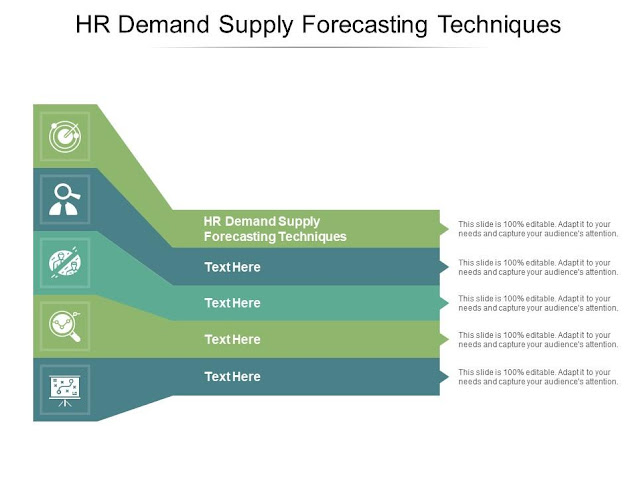Analysis of HR Supply and Demand: Navigating Workforce Trends in a Dynamic Landscape
Image 01
Introduction
In today's rapidly evolving business landscape, the human resources (HR) function plays a pivotal role in ensuring an organization's success. A strategic approach to HR involves not only managing the existing workforce but also understanding and anticipating the supply and demand dynamics within the labor market. This analysis delves into the complexities of HR supply and demand, highlighting the key factors that influence them and the strategies organizations can adopt to effectively manage their workforce in a dynamic environment.
Factors Influencing HR Supply and Demand
Image 02
Economic conditions
The state of the economy has a direct impact on HR supply and demand. During economic downturns, organizations often resort to downsizing, leading to reduced demand for employees. Conversely, during periods of economic growth, the demand for talent surges as companies expand their operations. For instance, the recession of 2008 witnessed a significant decrease in HR demand across industries, resulting in a surplus of HR professionals (Smith, 2010).
Technological advancements
Industry and job responsibilities are changing as a result of technological improvements and the digital transformation, which has an impact on demand and supply for human resources. There is a demand for positions in data analytics, cybersecurity, and AI development as a result of automation and artificial intelligence (Mishra, 2019). To address these changing needs, HR professionals must adapt by upskilling and reskilling the workforce.
Demographic Shifts
Demographic shifts, such as the aging workforce and the rise of millennials and Gen Z entering the job market, have significant implications for HR supply and demand. The retirement of baby boomers creates a supply gap, necessitating the recruitment and training of younger workers to fill these roles (Burtless, 2013). Simultaneously, younger generations bring different skill sets and work preferences, necessitating a dynamic approach to talent management (PwC, 2019).
Strategies for Managing HR Supply and Demand
Image 03
Workforce PlanningEffective workforce planning involves analyzing an organization's current and future HR needs. By forecasting the demand for specific skills and roles, organizations can proactively address potential shortages and surpluses. This requires collaboration between HR, finance, and business leaders to align staffing strategies with organizational goals (SHRM, 2021).
Talent Acquisition and Recruitment
To bridge the supply-demand gap, organizations must adopt innovative recruitment strategies. Embracing digital platforms, leveraging social media, and establishing partnerships with educational institutions can help attract a diverse pool of candidates (Smith, 2010). Additionally, nurturing talent pipelines through internships and apprenticeships can ensure a steady influx of skilled workers (Mishra, 2019).
Employee Development and Retention
Investing in employee development and retention is crucial for managing HR supply and demand. Upskilling and reskilling programs not only enhance the existing workforce's capabilities but also contribute to employee satisfaction and loyalty (SHRM, 2021). Moreover, fostering a positive work culture and providing growth opportunities can reduce turnover rates and alleviate talent shortages (PwC, 2019).
Flexible Work Arrangements
The use of flexible work arrangements, such as gig labor and remote work, might lessen the issues of HR supply and demand. These agreements help firms access a global workforce and draw from a diversified talent pool, thereby solving the skills gap (Burtless, 2013).
Conclusion
In the dynamic landscape of today's business world, HR supply and demand are intricate and ever-changing. Economic conditions, technological advancements, and demographic shifts all influence the balance between the available workforce and the organization's needs. To navigate these complexities, organizations must adopt proactive strategies such as workforce planning, innovative talent acquisition, and employee development initiatives. By embracing these approaches, organizations can not only address immediate HR challenges but also position themselves for long-term success in a rapidly evolving job market.
References:
Burtless, G. (2013). The impact of population aging and delayed retirement on workforce productivity
[Online] Available at: https://papers.ssrn.com/sol3/papers.cfm?abstract_id=2275023 [Accessed on 15th August 2023]
Mishra, S. (2019). Emerging Trends in HR: A Path to the Future of Work. People Matters.
[Online] Available at: Article: Breaking free from the old and welcoming the new! — People Matters
[Accessed on 15th August 2023]
PwC. (2019). Workforce of the Future: The Competing Forces Shaping 2030
[Online] Available at: Workforce of the future - The competing forces shaping 2030: PwC [Accessed on 15th August 2023]
SHRM. (2021). Workforce Planning: A Guide to Getting Started. Society for Human Resource Management
Smith, L. (2010) Using Action Learning And Critical Thinking Tools To Make Changes In Higher Education
[Online] Available at: Administrative Structure of the program: To understand where the program is now, it is important to trace it’s somewhat convoluted developmental trajectory [Accessed on 15th August 2023]
Image 01 Available at: https://www.slideteam.net/hr-demand-supply-forecasting-techniques-ppt-powerpoint-presentation-portfolio-ideas-cpb.html [Accessed on 15th August 2023]
Image 02 Available at: https://anjuthomasbims.wordpress.com/2015/11/25/supply-and-demand-forecasting-hrp/ [Accessed on 15th August 2023]
Image 03 Available at: https://www.slideteam.net/strategic-human-resources-plan-framework-demand-forecasting-supply-forecasting-ppt-powerpoint-presentation-icon.html





The present labor market is demandable. HR in an organization should analyze the supply and demand of its labor force and should react soon.
ReplyDeleteThe analysis of HR supply and demand is the process of understanding the current and future availability of workers with the skills and experience needed to fill open positions.
ReplyDelete
ReplyDeleteThe analysis of HR supply and demand has become increasingly critical in today's dynamic business landscape, as organizations strive to align their workforce with evolving trends and challenges. Navigating these trends effectively enables businesses to optimize their staffing strategies, ensure skill availability, and maintain a competitive edge.
Comprehensively explores the multifaceted aspects of HR supply and demand.
ReplyDelete